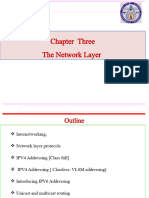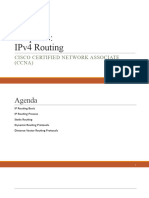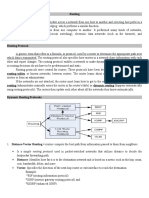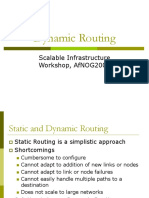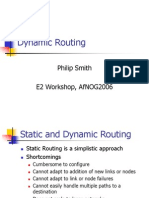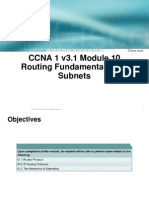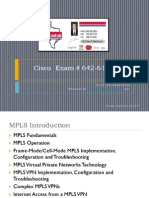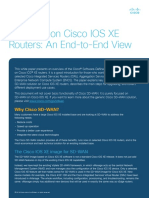0% found this document useful (0 votes)
58 views33 pagesLecture 10 - Network Layer-Routing - Protocols
The document provides an overview of routing and network layer protocols, highlighting the importance of routing in determining efficient data paths across networks. It covers various routing types, protocols, and their characteristics, including static and dynamic routing, as well as protocols like RIP, OSPF, and BGP. Additionally, it discusses key network layer protocols such as ICMP, ARP, and IGMP, emphasizing their roles in error reporting, address resolution, and multicast management.
Uploaded by
gafferdesigningCopyright
© © All Rights Reserved
We take content rights seriously. If you suspect this is your content, claim it here.
Available Formats
Download as PDF, TXT or read online on Scribd
0% found this document useful (0 votes)
58 views33 pagesLecture 10 - Network Layer-Routing - Protocols
The document provides an overview of routing and network layer protocols, highlighting the importance of routing in determining efficient data paths across networks. It covers various routing types, protocols, and their characteristics, including static and dynamic routing, as well as protocols like RIP, OSPF, and BGP. Additionally, it discusses key network layer protocols such as ICMP, ARP, and IGMP, emphasizing their roles in error reporting, address resolution, and multicast management.
Uploaded by
gafferdesigningCopyright
© © All Rights Reserved
We take content rights seriously. If you suspect this is your content, claim it here.
Available Formats
Download as PDF, TXT or read online on Scribd
/ 33
